| Gemstone Chart |
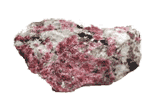 Natural Eudialyte Natural Eudialyte
eudialyte is a rare, plummy-red stone. Eudialyte's name comes from the Greek words "eu" and "dialytos", meaning "easy to dissolve" which refers to the mineral's solubility in acids.The stone's distinctive grey, black or white patterning gives each piece of jewelry a unique beauty.
Color: orange red
Categories: semi-precious stone
Crystal Group: Trigonal
Refractive Index: 1.596 - 1.602
Hardness: 5 - 6
Density: 2.88
Occurrence: Sweden; Kippaw,Canada
| 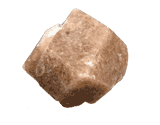 Natural Grossularite Natural Grossularite
A member of the garnet group, grossularite is found in a variety of colors including, yellow, brown, white, colorless, green, violet-red, and orangey red.
Color: Brown, yellow, green
Categories: semi-precious stone
Chemical Composition: Ca3Al2(SiO4)3
Crystal Group: Cubic
Refractive Index: 1.72-1.748
Hardness: 7.25
Density: 3.65
Occurrence: Canada, East Africa, Pakistan, New Zealand, Ceylon, South Africa, U.S.A.
| 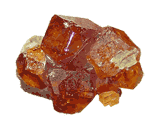 Natural Hessonite Natural Hessonite
Hessonite is one of the gem varieties of the garnet mineral, grossular. Hessonite is usually cinnamon brown and has been called "cinnamon stone". Hessonite can also be orange; this color is becoming common on the gem markets.
Color: Brownish-orange, brownish yellow, aurora red
Categories: semi-precious stone
Chemical Composition: Ca3Al2(SIO4)3
Crystal Group: Cubic
Refractive Index: 1.72-1.74
Hardness: 7.25
Density: 3.65
Occurrence: Sri Lanka, Mexico, Brazil, Canada, Madagascar
| 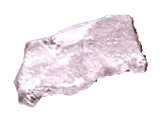 Natural Oligoclase Natural Oligoclase
Oligoclase is a rock-forming mineral belonging to the plagioclase feldspars. Oligoclase is famous for its two gem varieties: Sunstone and Moonstone.
Color: green, orange, red, colorless
Categories: semi-precious stone
Chemical Composition: [Na,Ca]AlSi3O8
Crystal Group: Triclinic
Refractive Index: 1.53 - 1.54
Hardness: 6 - 6.5
Density: 2.62 - 2.65
Occurrence: Tvedestrand and Hitero on the south coast of Norway; near Lake Baikal Russia; Ontario, Canada; Tanzania; Kangayam, southern India; France; and in Maine, New Mexico, New York, North Carolina, Pennsylvania, Virginia and Oregon in the USA.
| 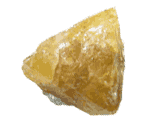 Natural Scheelite Natural Scheelite
Scheelite is a calcium tungstate mineral with the chemical formula CaWO4.With a hardness of 4.5 to 5 on the Moh's ScaleScheelite is a rather soft stone. Traditionally, it was considered a collector's gem and unsuitable for use in jewelry.
Color: Yellowish-white, brownish, orange yellow
Categories: semi-precious stone
Chemical Composition: CaWO4
Crystal Group: Tetragonal
Refractive Index: 1.918 - 1.937
Hardness: 4.5 - 5.0
Density: 5.9 - 6.1
Occurrence: Czechoslovakia; Italy; Switzerland; Finland; Cumberland, Cornwall, England; Santa Cruz, Sonora, Mexico; South Dakota, Conneticut, Colorado, Utah, California, Arizona, USA; New South Wales and Queensland, Australia; Mian Yang, and Ping Wu, Sezhuan, China; Hollinger Mine, Ontario, Canada;
| 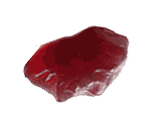 Natural Sunstone Natural Sunstone
Sunstone is a sodium-calcium-aluminum-silicate variety of plagioclase feldspar, which when viewed from certain directions exhibits a brilliant spangled appearance; this has led to its use as a gemstone.
Color: Orange-red, brownish-red
Categories: semi-precious stone
Chemical Composition: NaAlSi3O8
Crystal Group: Triclinic
Refractive Index: RI 1.54 ĘC1.55
Hardness: 6
Density: SG 2.62 ĘC 2.65
Occurrence: Near Lake Baikal Russia; East Africa; Hastings, Renfrew, and Haliburton, in Ontario Canada; Tvedestrand, Hitero, Norway; Kangayam, India; Maine, Oregon, New Mexico, California, and North Carolina, USA.
|
|
